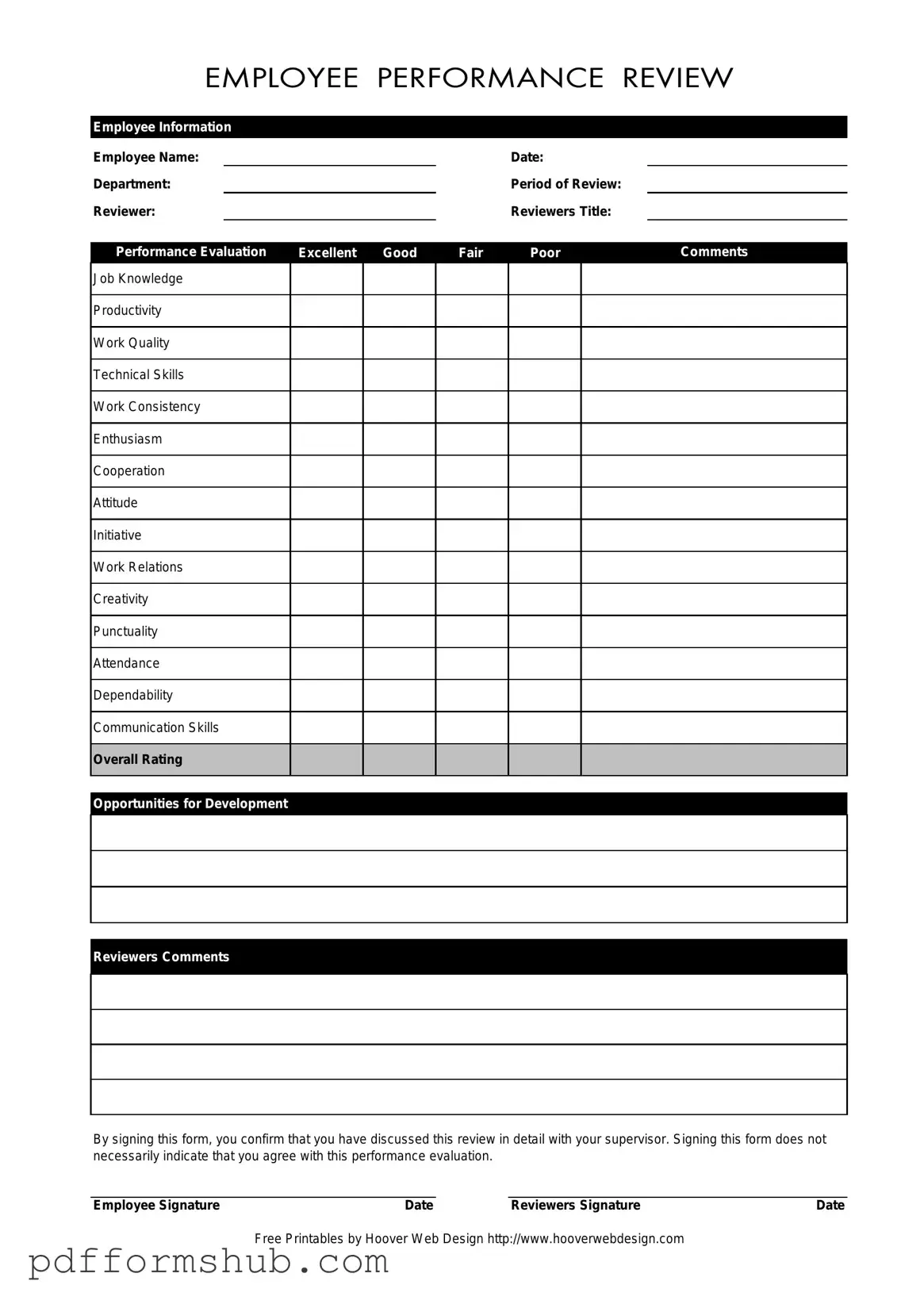The Employee form serves as a crucial tool in the performance evaluation process, capturing essential information about an employee's work and contributions. It includes fields for basic employee details such as name, department, and review period, which help establish context for the evaluation. The form also features a structured performance evaluation section, where reviewers can assess various competencies, including job knowledge, productivity, work quality, and communication skills. Each competency is rated on a scale from excellent to poor, allowing for clear feedback. Additionally, the form provides space for comments, enabling reviewers to elaborate on their assessments and highlight opportunities for development. Both the employee and the reviewer are required to sign the form, confirming that the evaluation has been discussed in detail. However, it's important to note that signing does not imply agreement with the evaluation, ensuring that the employee’s perspective is acknowledged. This comprehensive approach promotes transparency and accountability in performance reviews.
